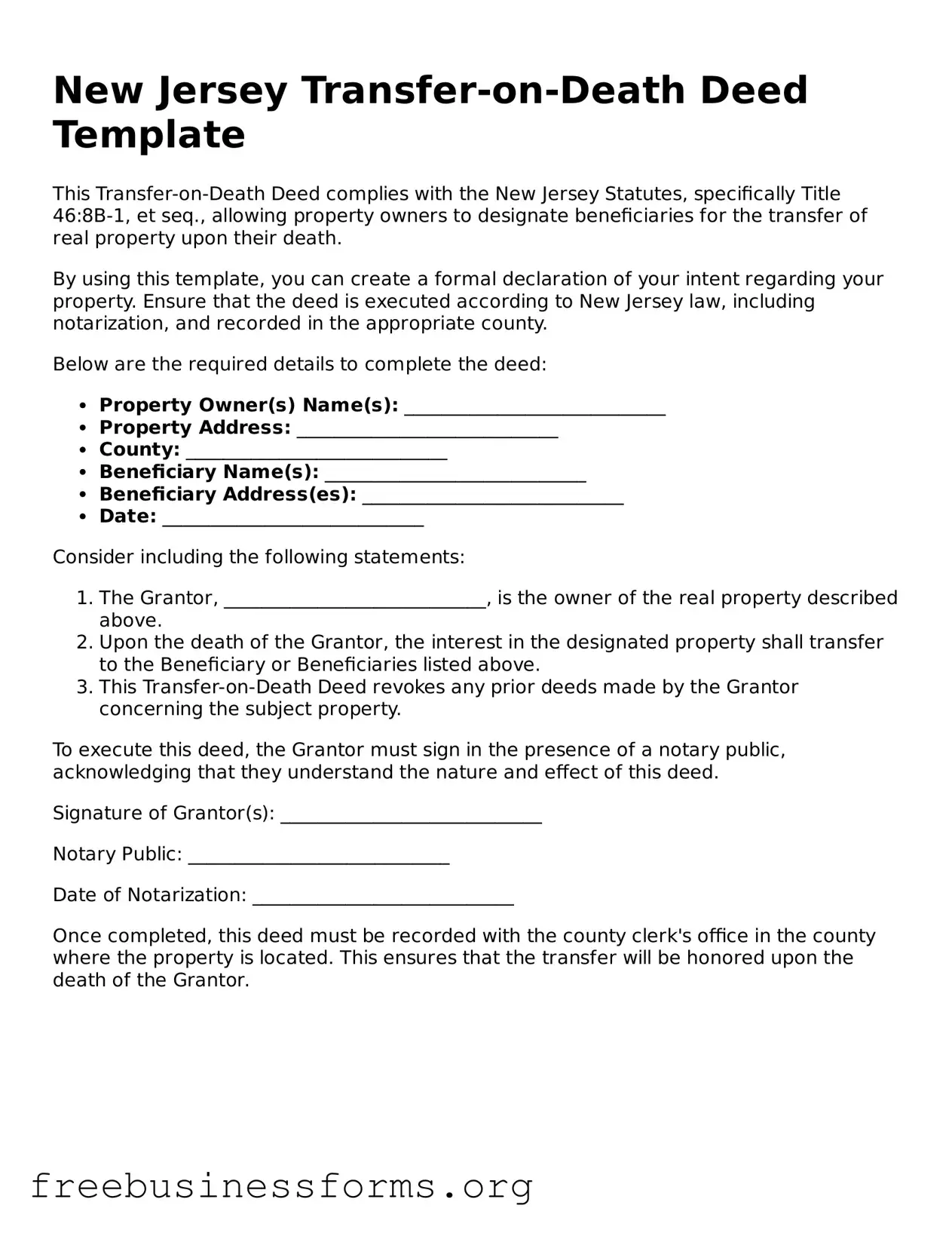New Jersey Transfer-on-Death Deed Template
This Transfer-on-Death Deed complies with the New Jersey Statutes, specifically Title 46:8B-1, et seq., allowing property owners to designate beneficiaries for the transfer of real property upon their death.
By using this template, you can create a formal declaration of your intent regarding your property. Ensure that the deed is executed according to New Jersey law, including notarization, and recorded in the appropriate county.
Below are the required details to complete the deed:
- Property Owner(s) Name(s): ____________________________
- Property Address: ____________________________
- County: ____________________________
- Beneficiary Name(s): ____________________________
- Beneficiary Address(es): ____________________________
- Date: ____________________________
Consider including the following statements:
- The Grantor, ____________________________, is the owner of the real property described above.
- Upon the death of the Grantor, the interest in the designated property shall transfer to the Beneficiary or Beneficiaries listed above.
- This Transfer-on-Death Deed revokes any prior deeds made by the Grantor concerning the subject property.
To execute this deed, the Grantor must sign in the presence of a notary public, acknowledging that they understand the nature and effect of this deed.
Signature of Grantor(s): ____________________________
Notary Public: ____________________________
Date of Notarization: ____________________________
Once completed, this deed must be recorded with the county clerk's office in the county where the property is located. This ensures that the transfer will be honored upon the death of the Grantor.
